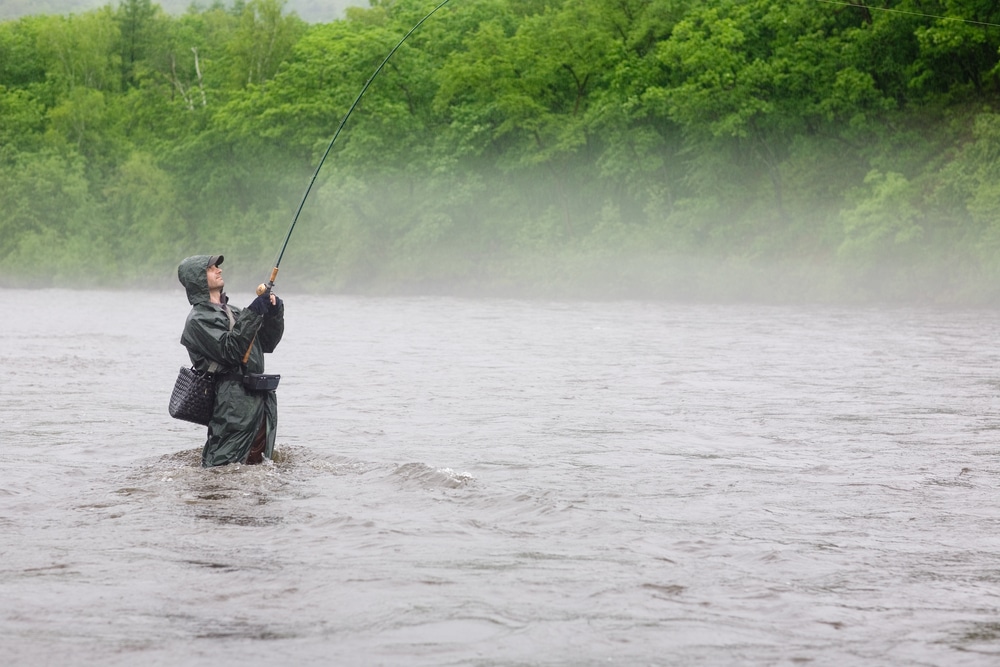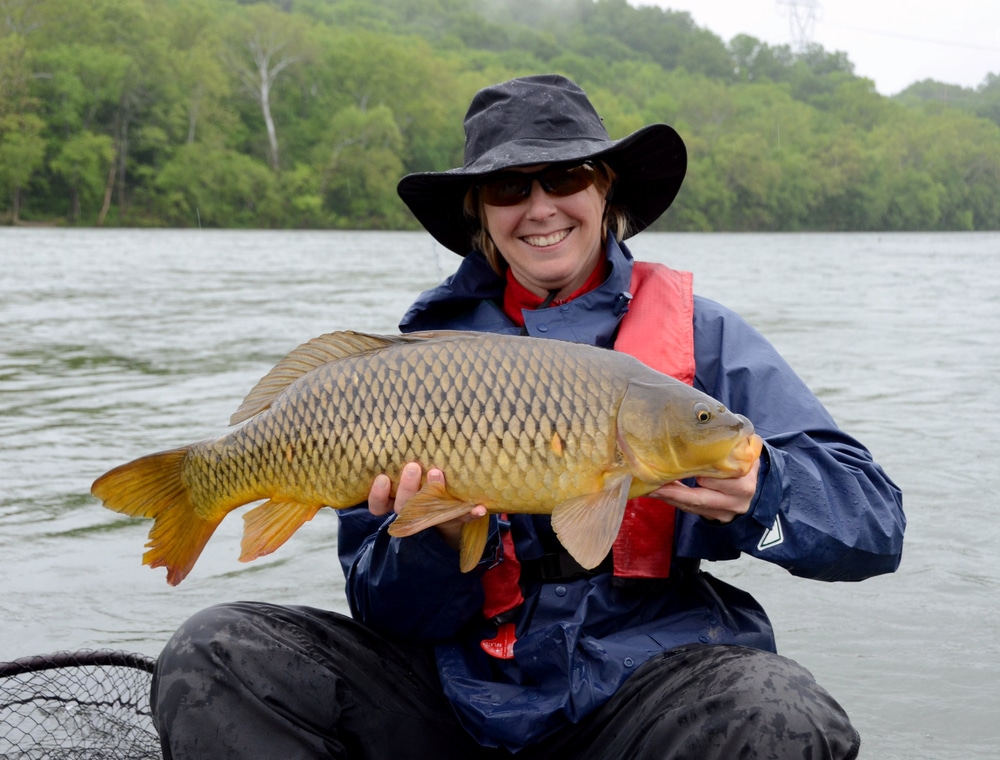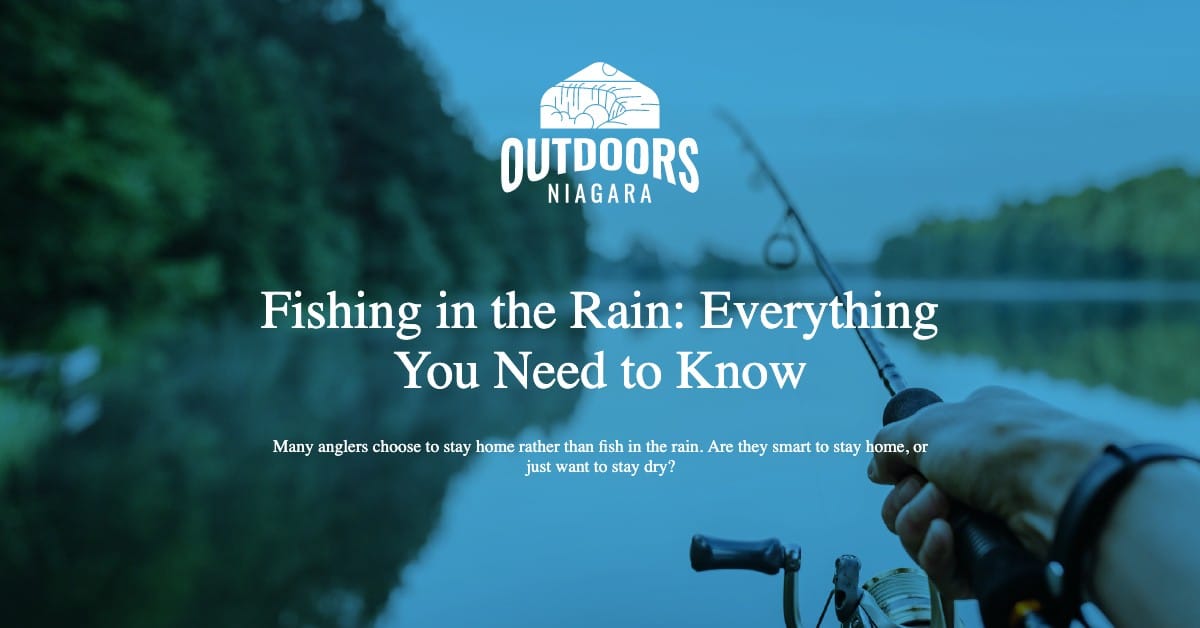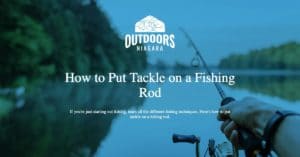Many anglers choose to stay home rather than fish in the rain. Are they smart to stay home, or just want to stay dry?
The following addresses what you need to know for fishing in the rain.
Contents
Is fishing in the rain good fishing?
Fishing in the rain can be good, or it can be disastrous.
To start, you have to think like a fish. Ask yourself what happens from the fish’s perspective when it rains?
If you look out a clean window you see the world as some fish do when the water column is clean and clear.
When rain comes, the clarity of the water changes and fish see less.
The heavier the rain, the less that a fish can see outside the water column and the shorter the distance they can see inside the water column.
Rain changes how much fee see and that makes attracting them to lures or flies more difficult.
For that reason, many anglers avoid fishing in the rain.
Those that don’t mind the rain can take what they know about angling and have an absolutely wonderful fishing adventure.

Is it worth fishing in the rain?
Absolutely. Even though it is raining, the fish are still driven by base needs, such as satiating hunger.
There are tricks that make fishing in the rain more successful.
In cold rain, fish tend to become slower. Fish are ectothermic or cold-blooded.
The colder the water the slower the fish are.
That means as anglers, we fish closer to the fish, and we use baits with stronger smells, lures with brighter colors, and Flies that have some flash to them.
Do fish like to bite in the rain?
Yes, many fish will bite in the rain.
Rain not only causes an issue with visibility for fish, but it often causes the water to move more rapidly, and it will wash insects into the water.
Rain means an increase in food for those fish that can spot potential prey.
Is fishing bad after rain?
No. Fishing is usually excellent before a storm and after a storm.
The fish can feel the changes in barometric pressure, and they become more active before it rains.
The general idea is to find as much food as possible and then sit out the rain for a while.
However, hunger is a driving force for fish and as soon as they begin to get hungry, they look for food.
After a storm, hungry fish are eager to find a meal.
How does the rain affect fishing?
A few things happen when it rains to affect fishing.
- Most of the time the water becomes colder and fish become slower.
- The water clouds from the rain striking the surface and from the added turbidity that washes into the water.
- Because of the decrease in visibility, and all the activity of rain hitting the water’s surface, fish tend to lie low until the rain stops. This is part of their way to decrease the chance of being eaten by bigger fish.
Is any location better than others?
When the water gets rough, fish around natural structures, such as piers or rocks. Structures offer shelter from the current and also help to protect the fish from predation.
In rivers, Deeper pools are a good target. The deeper water is often clear allowing the fish to see better, and deeper water is often still, so fish are rested rather than tired from fighting the current. Also, deeper water has a more even temperature, so the fish is slightly more active.
Is it better to fish before or after rain?
Both before or after a storm are often the best times to fish.
Fish tend to try to eat as much as possible before a storm hits and after a storm they are hungry.

Tips for fishing in the rain?
The best tip for fishing in the rain is to take care of yourself. Dress according to the weather. Layers help you regulate your body temperature. Waterproof outerwear helps keep you dry, which allows you to fish longer. Waterproof gear bags will keep your stuff dry also. Be alert for water-resistant produces vs. waterproof products. Water-resistant products get wet inside faster than most waterproof products.
- Dress for Wet Weather – Dress for comfort and warmth. Weather changes, so you want the option of removing layers if it gets warmer.
- Plan for Active Fishing – The best time to fish in the rain is just before the storm hits. The fish are very active and seeking to gorge themselves. Once the rain starts, fish often settle into a spot to wait out the rain.
- Be Bold – Once the rain starts the water clarity worsens. That means fish have a harder time seeing food. Go with bright colors – reds, greens, white, neon, blues, etc. The brighter colors stand out to fish in murky water.
- Fish the Active Waters – Rain makes the water move faster and aquatic insects and terrestrial insects will wash into the water column and drift toward outlets such as overspills. The fish know that and will lurk in those areas to feeds. A good tip is to fish below riffle sections in rivers where the water washes over gravel and rocks.
- Fish the Shore – Insects and crustaceans washed away by the rain and increased water speed will drift in the direction of the water and wind. Fishing along the windy shore is a good place to find fish looking to scavenge the storm food stores.
- Tip it to the Top – Trout and Bass will hit objects that float on the water’s surface. Aim for floating flies and lighter lures to keep the line near the top of the water.
Gear preparation for rain fishing
Waterproof gear bags are essential for fishing in the rain.
Your casting pole handle and reel will be exposed to the rain, but most are designed for some exposure to water.
You will need to clean and dry the reel when you get home.
If your gear pack is waterproof, you will likely not have to deal with cleaning other tools.
Other items that are essential for fishing in the rain include:
- Waders – Bib waders offer the most protection from wind-driven rain.
- Waterproof Jacket – paired with waders offer an almost complete waterproof covering.
- You can opt for a rain suit – boots, pants, jacket instead of waders and a jacket.
- A rain hat is also essential – most rain jackets come with a hood, which is good, but not good enough. A wide brimmed hat will help keep water off of your face and out of your eyes. If you opt for a wide-brim hat, fit is very important as it will be a mess to deal with in the wind if it does not stay in place. Smaller brimmed hats are also good choices and have less wind drag.
- Gloves are also key tools for fishing in the rain. Form-fitting gloves will help keep your hands warm and your fingers nimble.
- A good optional piece of equipment are hand warmers. These are little packets that heat up when exposed to air. You can fit smaller hand warmers into your gloves, boots, or pockets.
- Dress in layers – if your outerwear is waterproof, your base- and mid-layers will remain dry and keep you warm. Fishing requires the freedom to move and dressing in layers helps keep your rain gear from binding.
Key Takeaway
Dress for the weather and aim to stay warm is the first takeaway.
Others include using stinky bait, brightly colored lures or flies since the water will become murky.
Try to fish in deeper water or around structures that offer shelter for fish.
Remember that the more comfortable you are – dry and warm – the funner fishing in the rain is.







